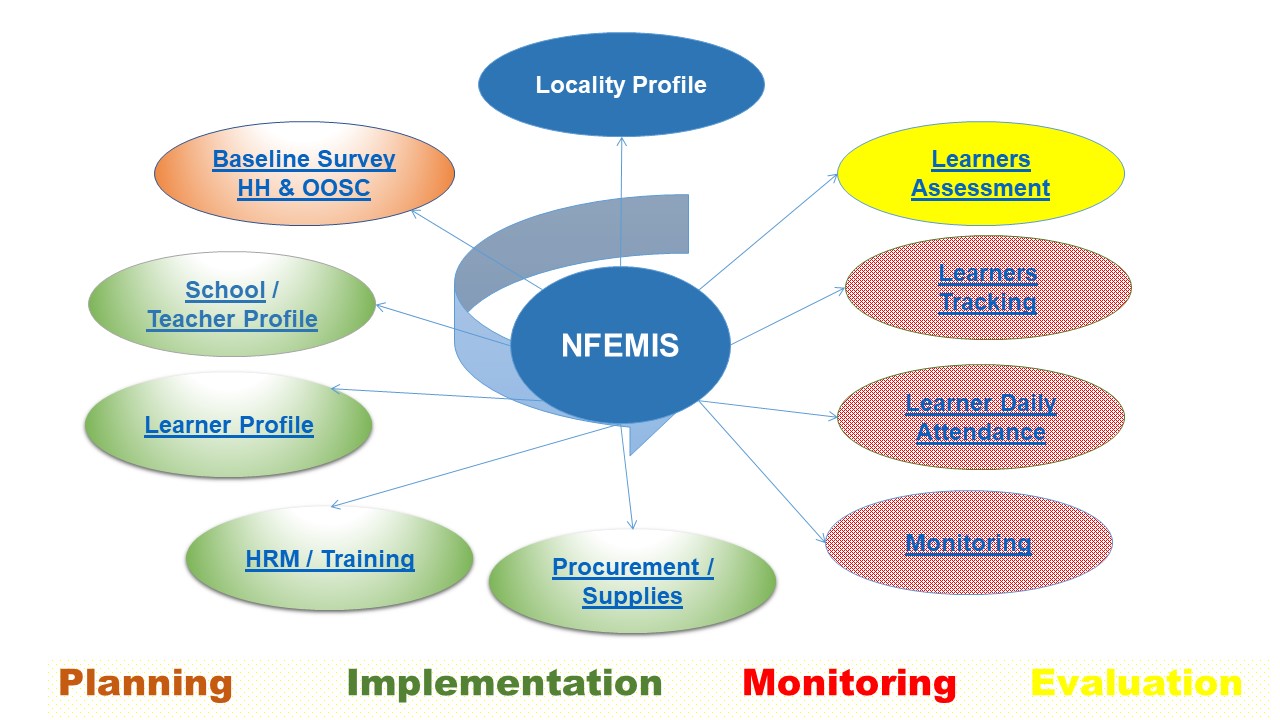Non Formal Education Management Information System (NFEMIS) is an online database to manage data of Non-Formal Education in Pakistan. It enables to implement PDCA (Plan-Do- Check- Act) cycle based on timely data in the NFE sector. Generally, educational statistics are more likely to be focused on the number of learners and schools; however, it shows a part of the quantitative information of the educational situation and have difficulties to figure out what kind of issues exist in the field or management. That is to say, the partial information can suggest limited solutions for the issues. This is the starting point of development of NFEMIS. NFEMIS covers information of learners, teachers, centers, learning achievement, daily attendance, tracking of the learners, OOSC, monitoring record of the centers and procurement to show situation of NFE holistically for users. It promotes Data Driven management (DDM) to improve educational situation qualitatively and qualitatively.
The beauty of NFEMIS is to involve various levels of NFE stakeholders in this system ... to collect timely and accurate data from the field level such as NFE teachers, monitoring officers and district officers. Before development of the online NFEMIS, challenge was to collect and enter the data timely. The field level officers fill out forms on paper-based format and send them to concerned office. After that, data-entry officers would enter data based on the paper-based formats. This mechanism required several time gap between data-collection in the field and data-entry and also have possibility of mistakes of data-entry due to hand-writing format. However, NFEMIS web-version and mobile application has solved both the issues because data-collection and data-entry can be completed by the same person and it saves time and work load as well. Secondly, NFEMIS enables DDM from the national level to the field level (classroom management). The fresh data helps those who need to make a decision at any level and promotes DDM. Decision-making sounds like only for high level of the education sector, but it is not true; all the levels of NFE requires DDM. For example, when one NFE center in a village have the lowest average scores in mathematics, monitoring officers can compare the results with other centers and also with the previous years to conclude and recommend some concrete actions to be taken to build capacity of the NFE teachers in mathematics. Also, as classroom management, NFEMIS makes it easier for NFE stakeholders at the national and provincial/district levels to manage their NFE activities scientifically and structurally.
